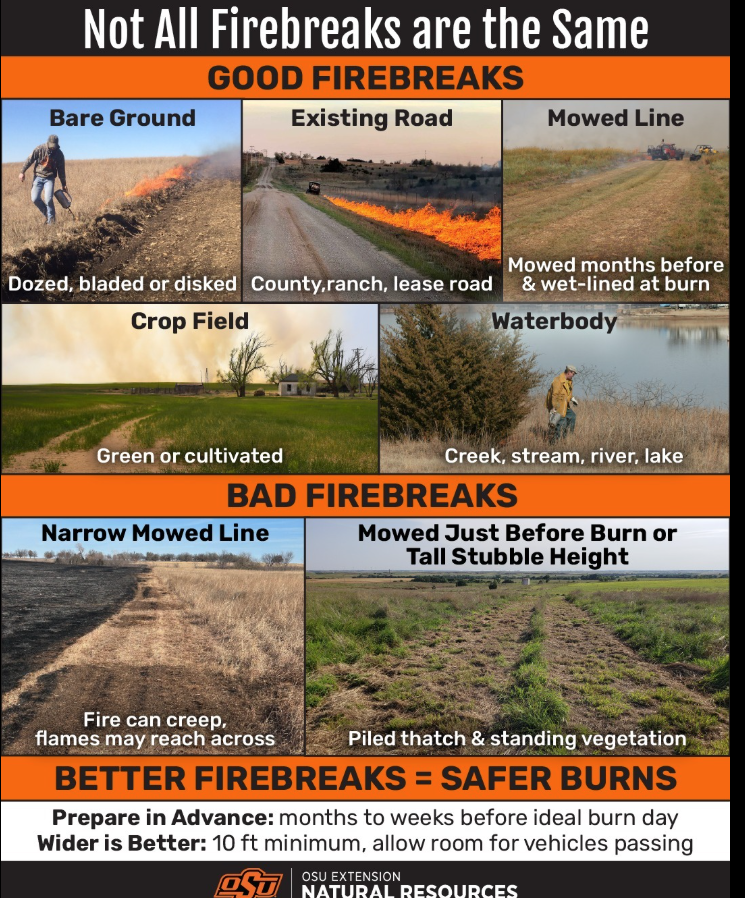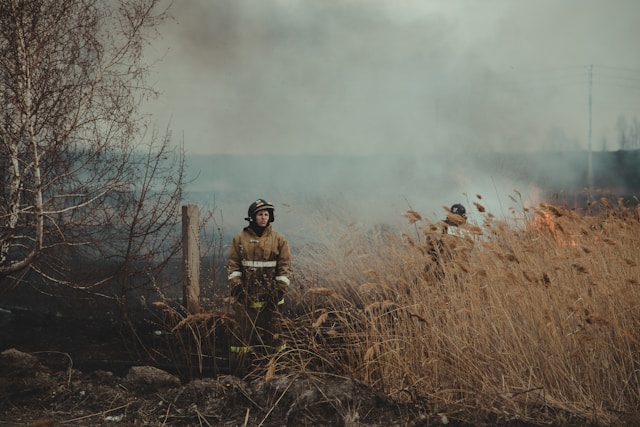
With the early spring prescribed burning season approaching, fire and land management specialists are urging property owners to take immediate action in building and preparing their firebreaks. Experts say that proper firebreak construction is the most critical step in ensuring that controlled burns remain safe, manageable, and free from escape.

While prescribed burns are essential for healthy grasslands, pasture rejuvenation, and invasive species control, the success of each burn depends heavily on the quality of the firebreak protecting the site. As advisors emphasize, the message for landowners is straightforward: “Not all firebreaks are the same, and advance preparation is key to a safer burn.”
A reliable firebreak is more than a narrow strip of short grass. It is a fuel-free barrier wide enough to stop the fire from creeping across and reduce flame height. Good firebreaks include:
Bad firebreaks, on the other hand, greatly increase escape risk and should be avoided. These include:

Experts stress two main rules for anyone planning a prescribed burn:
Fire management professionals also recommend conducting practice runs of equipment, testing water pumps, and reviewing burn plans before the season begins. Many emphasize that well-built firebreaks save time during burns and eliminate dangerous last-minute scrambling.
Landowners who want to improve or design effective firebreaks can turn to professional guides and training tools, including expert documents such as the Firebreaks for Prescribed Burning Factsheet, which provides detailed instructions on construction, maintenance, and safety strategies.
As prescribed fire continues to be a valuable tool in agriculture and land restoration, early planning remains the best defense against accidental wildfires and costly damage.
Originally reported by Oklahoma Farm Report.